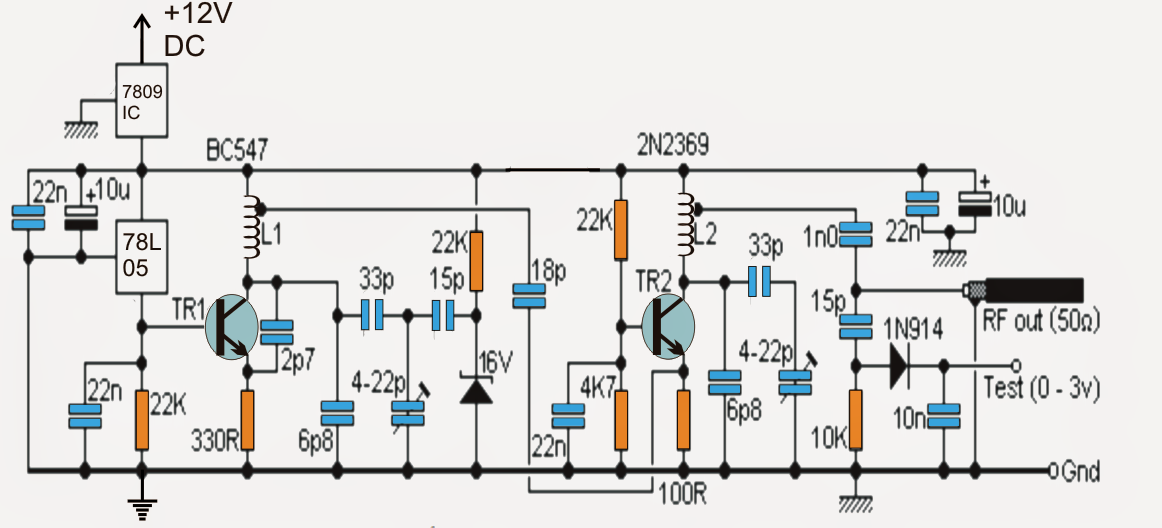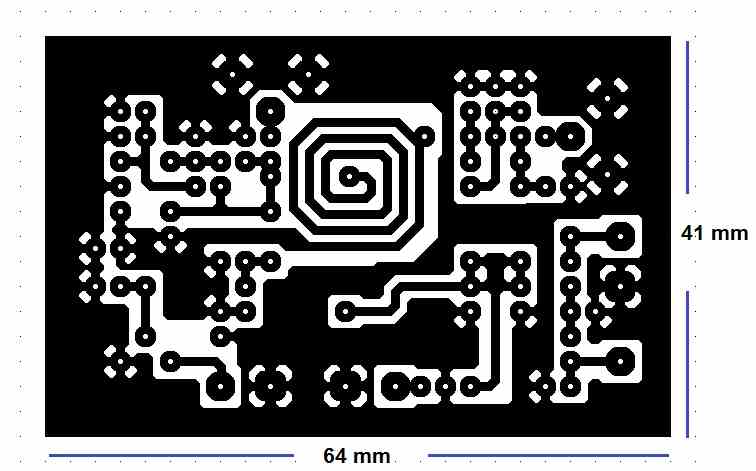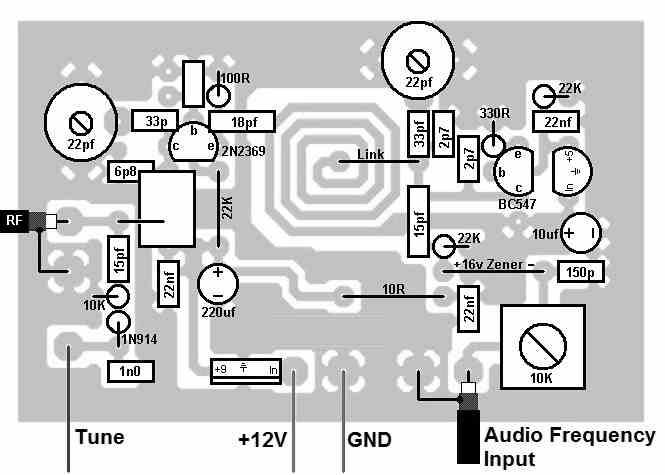The article represents an uncomplicated homemade RF signal jammer circuit that anyone can use for jamming any RF signal within a radial selection of 10 meters.

A basic appearing RF signal jammer circuit can be watched in the above diagram, that could be effective at jamming different kinds RF signal within the choice of 5 to 10 meters.
The circuit can be accomplished suitable with any expected frequency to be jammed by merely making use of various sets of L1/L2 and by amending the 22pF trimmers appropriately. The frequency that is certainly jammed making use of this circuit could possibly be well within the range of 50 MHz to 1Ghz, in spite of this rendering it suitable for frequencies above 500 MHz could easily get much complex and parameters much important on account of the fact that higher frequencies need shorter interconnections and may consist of other steadiness problems.
The existing design can be employed for jamming FM radio stations located in the within 40 meters radial distance or even higher. On the other hand the unit may be utilized as an effective 1km range audio transmitter by providing a MIC input across the pont mentioned "Test".
The circuity of the suggested RF signal jammer is essentially composed of two different phases: The one consisting T1 and the relevant parts form the RF oscillator stage while the other stage comprise of T2 and the complementing parts for amplifying and transmitting the low voltage oscillations from T1 into the air.
The above solid RF carrier signals transmitted by T2 might be accordingly modulated with any external frequency for example an audio or speech by supplying the signal across the terminal suggested "Test".
The circuit is definitely sturdy and does not need to falter with different input supply voltages as a result of the existence of the 78L05 voltage regulator at the base of T1 which clamps the base of T1 with a continuing biasing current ensuring the oscillations produced by the T1 stage remains very sturdy and continuous.
The above characteristic is completely enhanced by the T2 stage which welcomes the oscillations from the T1 stage and amplifies and converts the signals with much higher current to ensure that the signals have the ability to travel across larger radial distances in the air.
On the other hand to be able to make use of an optimal transmission of the signals, 50 OHM impedance antenna must be employed with the output of the circuit.
This may be any normal aluminum dipole yagi antenna. An easy flexible wire measuring about a meter would certainly also do but would certainly reduce the transmission strength by about 60 % producing the unit much ineffective with regards to the transmission range is concerned.
For producing the RF jammer appropriate for other frequencies, the coil L1 and L2 ought to be shortened concerning their number of turns and/or also the diameter...this will require some testing until the appropriate frequency is identified.
The adjoining trimmers may additionally tweaked for obtaining an optimal result from the jammer circuit or until a good jamming is accomplished by means of the circuit.
A good quality, well designed PCB is strictly suitable for starting the RF jammer circuit
The submit illustrate a fairly easy homemade RF signal jammer circuit that can be employed for jamming any RF signal within a radial choice of 10 meters.
A basic seeming RF signal jammer circuit can be visible in the above diagram, which can be efficient at jamming a wide range RF signal within the selection of 5 to 10 meters.
The circuit can be achieved suitable with any desirable frequency to be jammed by merely employing several sets of L1/L2 and by revising the 22pF trimmers suitably. The frequency which is usually jammed implementing this circuit may very well be well of about 50 MHz to 1Ghz, on the other hand making it very suitable for frequencies above 500 MHz could possibly get much complex and parameters much important as a result of the fact that higher frequencies prefer shorter interconnections and may comprise of other constancy difficulties.
The current design should be considered for jamming FM radio stations situated the within 40 meters radial distance or even higher. Additionally the unit can certainly be utilized as an impressive 1km range audio transmitter by providing a MIC input across the pont mentioned "Test".
The circuity of the recommended RF signal jammer is simply created of two specific levels: The one composing of T1 and the related parts form the RF oscillator stage while the other stage containing T2 and the complementing parts for amplifying and transmitting the low voltage oscillations from T1 into the air.
The above powerful RF carrier signals transmitted by T2 could be effectively modulated with any external frequency for instance an audio or speech by supplying the signal across the terminal suggested "Test".
The circuit is extremely dependable and is not going to falter with various input supply voltages on account of the occurrence of the 78L05 voltage regulator at the base of T1 which clamps the base of T1 with a persisting biasing current being sure that the oscillations developed by the T1 stage continues very solid and dependable.
The above function is absolutely accompanied by the T2 stage which allows the oscillations from the T1 stage and amplifies and modifies the signals with much higher current in order that the signals can easily travel across larger radial distances in the air.
In spite of this in an effort to carry out an optimal transmission of the signals, 50 OHM impedance antenna must be employed with the output of the circuit.
This might be any regular aluminum dipole yagi antenna. An easy flexible wire measuring about a meter would likely also do but would probably reduce the transmission strength by about 60 % providing the unit much incompetent as long as the transmission range is concerned.
To create the RF jammer appropriate for other frequencies, the coil L1 and L2 will have to be shortened with regards to their number of turns and/or also the diameter...this will desire some trials until the correct frequency is established.
The adjoining trimmers might also tweaked for finding an optimal reply from the jammer circuit or until an awesome jamming is obtained by way of the circuit.
A good quality, well designed PCB is strictly advisable for producing the RF jammer circuit





Leave a Reply